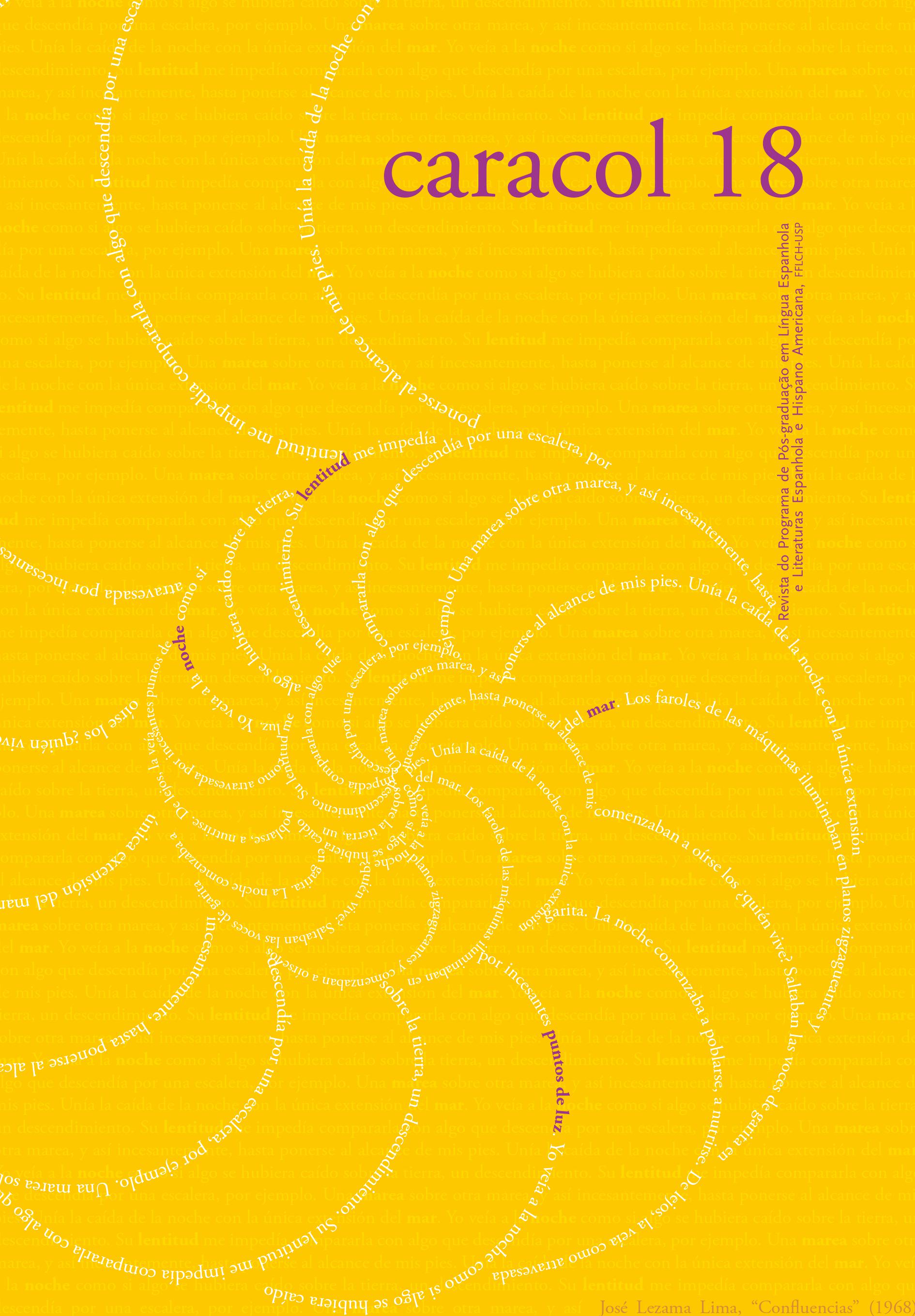Interactive role of the reader of The Time of the Hero (1963) by Mario Vargas Llosa
DOI:
https://doi.org/10.11606/issn.2317-9651.v18i18p413-433Keywords:
textual analysis, semiotics, reading mechanisms, representationAbstract
In the following article, we will analyze the interest that the narrator of The Time of the Hero has in generating a cathartic effect of reception to the reader, either by making him feel identified with one of the characters or recognizing one of the situations that is posed in the text. In order for the sensitivity of the reader to be what the narrator seeks, knowledge of those mechanisms that will allow the association of characters is essential; therefore, we will use some concepts of Mario Perniolo, Slavoj Žižek, among others, to determine how this idealized reading project develops. Considering this possibility, it would be assumed that the assimilation of information is present during the reading, as well as the opposite: rejection, doubt or confusion; moreover, a critical attitude would be cultivated if it were the case or a repulsion towards unethical acts (violence). The same thing will happen with respect to the presentation of the representation of history in the novel as a plot, because the reader requires a logical sequence that can be understood (he will string together logical sequences, even though these are technically dispersed or confused); for this reason, the requirement based on their attention and recruitment will be necessary (in this way, you can deny or accept an exposed approach, as well as question it or simply ignore it).
Downloads
References
Álvarez, Ángeles, Guía para mujeres maltratadas, La Mancha: Junta de Comunidades de Castilla, 2002.
Courtés, Joseph, Análisis semiótico del discurso. Del enunciado a la enunciación, Enrique Ballón (trad.),Madrid: Gredos, 1997.
Delgado Del Aguila, Jesús Miguel, Protagonismo violento y modos de representación en La ciudad y los perros (1963). Tesis de licenciatura. Lima: Universidad Nacional Mayor de San Marcos, 2017.
Doležel, Lubomír, Heterocósmica. Ficción y mundos posibles, Félix Rodríguez (trad.), Madrid: Arco/Libros, 1999.
Fabbri, Paolo, El giro semiótico, Barcelona: Gedisa, 1999.
García, Sarah y Luciana Ramos, Medios de comunicación y violencia, Instituto Mexicano de Psiquiatría, México, D. F.: Fondo de Cultura Económica, 2000.
Hernández, Eva, Agresividad y relación entre iguales en el contexto de la enseñanza primaria. Estudio piloto, Trabajo de investigación. Programa de Doctorado: “Cooperación, Desarrollo Social y Democracia”. Asturias: Universidad de Oviedo, 1999-2001.
Lacan, Jacques, El seminario. Libro 7. La ética del Psicoanálisis, Buenos Aires: Paidós, 1997.
Martín, José Luis, La narrativa de Vargas Llosa; acercamiento estilístico, Madrid: Gredos, 1979.
Perniola, Mario, Del sentir,César Palma (trad.),Valencia: Pre-Textos, 2008.
Ricoeur, Paul, Tiempo y narración. Configuración del tiempo en el relato histórico. Tomo I, Madrid: Siglo Veintiuno Editores, 1998.
Ryan, Marie-Laure, La narración como realidad virtual. La inmersión y la interactividad en la literatura y en los medios electrónicos, Barcelona: Paidós, 2004.
Vargas Llosa, Mario, La ciudad y los perros. Edición conmemorativa del cincuentenario, Italia: Alfaguara, Real Academia Española, 2012.
Žižek,Slavoj, Cómo leer a Lacan, Buenos Aires: Paidós, 2008.7
Downloads
Published
Issue
Section
License
Authors who publish in this journal agree to the following terms:
- Authors retain copyright and grant the journal the right of first publication, with the work simultaneously licensed under a Creative Commons Attribution License, which permits the dissemination of the work with recognition of authorship and initial publication in this journal.
- Authors are allowed to enter into additional contracts separately for non-exclusive use of the version of the work published in this journal (such as publication in an institutional repository or as a book chapter), with recognition of authorship and initial publication in this journal.
- Authors are allowed and encouraged to publish and distribute their work online (e.g., in institutional repositories or on their personal page) at any point before or during the editorial process, as this can generate productive changes, as well as increasing the impact and citation of the published work (see The effect of open access…).



